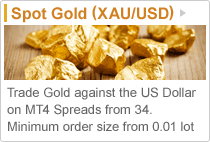Education
Essential Components of an FX Trade
STEP 1
Q: What are the Major Currencies?
A: The most commonly traded currencies or the "majors" are:
US Dollar (USD): 
Japanese Yen (JPY): 
Euro (EUR): 
British Pound (GBP): 
Canadian Dollar (CAD): 
Australian Dollar (AUD): 
Swiss Franc (CHF): 
FX trading is always done in pairs where one currency is bought and the other currency is sold. Together, they make up what is known as the "exchange rate".
Q: What are most commonly Currency pairs?
A: Most commonly traded currency pairs are:
US Dollar versus the Japanese Yen (USD/JPY) 

Euro versus US Dollar (EUR/USD) 

US Dollar versus Swiss franc (USD/CHF) 

British Pound versus US Dollar (GBP/USD) 

US Dollar versus Canadian Dollar (USD/ CAD) 

Australian Dollar versus US Dollar (AUD /USD) 

While quoting currency pairs, the first currency is referred to as the Base currency and the second as the Quote or Counter currency.The price represents how much of the Quote (Counter) currency is required for you to get one unit of the Base currency.

STEP 2
A Two Way Price
We will typically quote a two way price on a currency pair

Q: What is my rate when I sell EUR/USD?
A: You SELL at the Bid Rate: 1.34950
Q: What is my rate when I Buy EUR/USD?
A: You BUY at the Ask Rate: 1.34960
Note: When you buy (wanting a market to go up) you are dealing on the higher price, and when you sell (wanting a market to go down) you are dealing on the lower price.
Spread
The difference between the two prices is known as the 'spread'.
(see The Market Information Sheet )
Q: What is the spread for EUR/USD (1.34950 - 1.34960)?
A: The Spread is:
1.34960-1.34950=10 Points=1 Pip
Note: On LION MetaTrader4 many currencies prices are quoted to 5 decimal places. The Japanese Yen (JPY) is an exception where it is quoted out to the third decimal place.
In these examples the larger font size has been used to indicate the second smallest price increment, known as a Pip and the smallest price increment, known as a Point.
(1Pip = 10Points)
Margin and leverage
A trader can hold a market position much larger than the value of the trader's account value. We offer margin requirements depending on the base currency of your trading account;£GBP 3, $USD 5 and EUR 4 per lot.
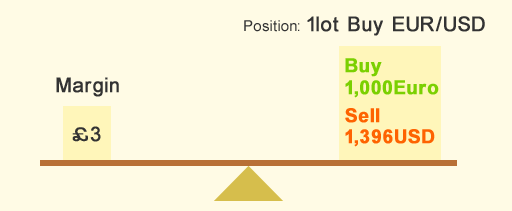
Note: Using leverage can generate large gains or losses.
In the case where a trader surpasses the maximum leverage allowed (which can happen when account equity shrinks as a result of trading losses), the trading system will close all open positions in the account.
This prevents a client's account balance becoming negative, even in a highly volatile, fast moving market.
In order to trade you will be required to have funds in your account. Every trade that you open will require a margin (funds that you have deposited to your account)
(see The Market Information Sheet for more details please).
The Rollover
In the spot Forex market, trades must be settled in two business days. If a trader sells 1,000 Euros on Tuesday, the trader must deliver 1,000 Euros on Thursday, unless the position is rolled over.
Hirose Financial automatically rolls over all open positions to the next settlement date at 17:00 EST. Rollover involves exchanging the position being held for a position expiring on the following settlement date.
For positions open at 17:00 EST there is a daily rollover charge that you pay. More detailed information about Rollover can be found at Rollover Financing
STEP 3
Trade Example to Buy
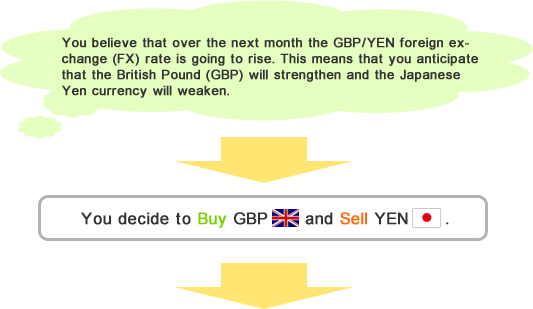
Note: Assumes you have a GBP funded account
For every lot you wish to trade, you will be required to deposit £3 for margin.
Each lot is worth 1000 units of the Base currency
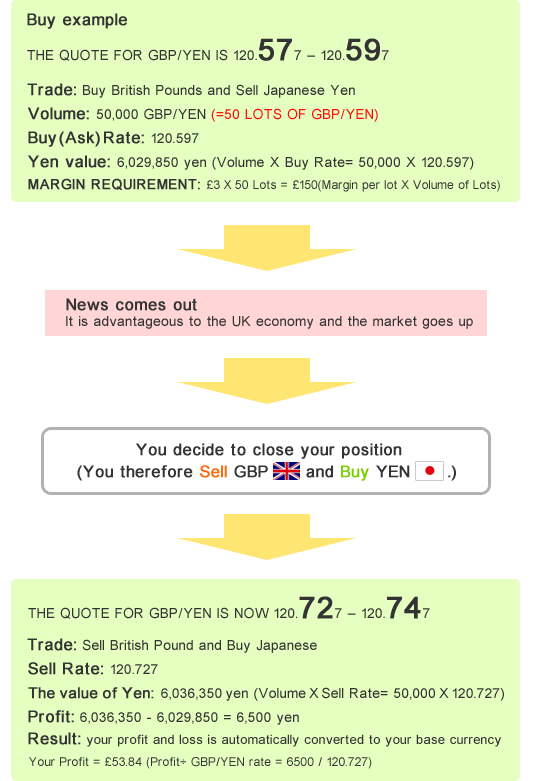
Trade Example for Sell
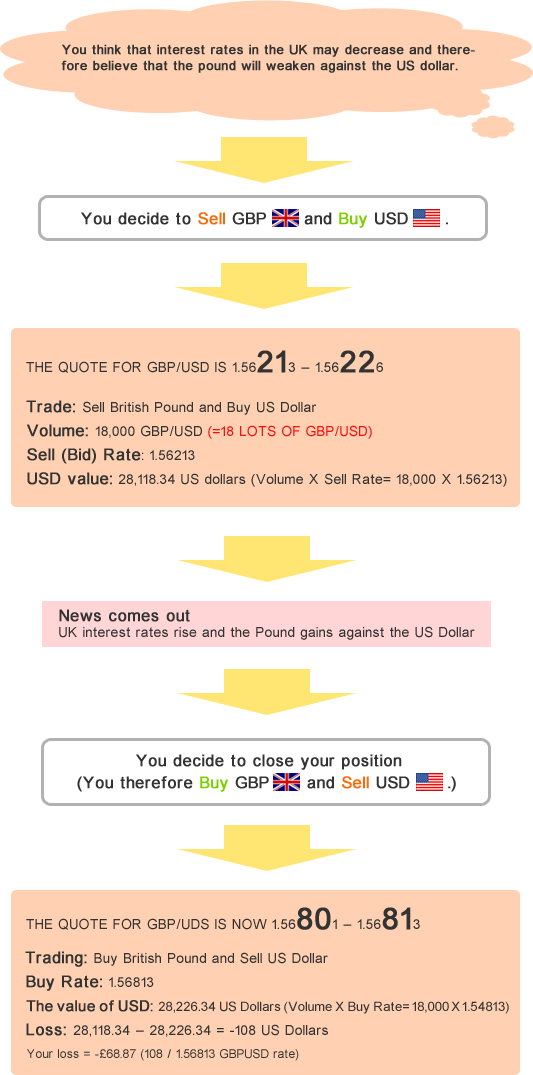
Note: your profit or loss is always calculated in the secondary currency. However this will always be converted to your Base currency (for both open and closed positions)on the Hirose Financial Trading platforms.
STEP 4
Should I use a stop loss?
When you open a new position on the trading platform it is advisable to place a stop loss against that trade, either at the time of entry or after the position has been established.
A closing stop loss order will give you a certain degree of protection on any open positions that you may have and will automatically close the position should the market move in the wrong direction. It is important to note that when a stop loss is activated your closing price may beexecuted at a significantly different price to the original order level. This is known as 'Slippage' and can happen in particularly volatile trading periods (e.g. when figures are released).
These volatile periods may also be characterised by 'Gapping', a situation where the market trades at a significantly different price to the previously traded price without trades occurring at intervening prices.
You can also leave closing limit orders so that if the market does move in the direction you expected and reaches a preset level chosen by you,the position will be closed automatically. A limit order is an order to close your position at a specific price or better. For an open 'buy' (or long) position, it will be closed at the limit price or higher; for an open 'sell' (or short) position, it will be closed at the limit price or lower.

 My Hirose Login
My Hirose Login



